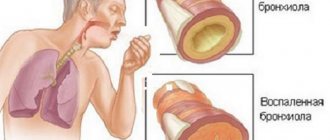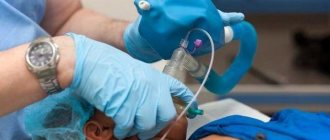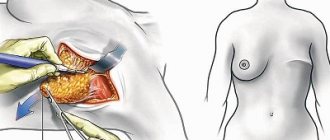One of the main elements in surgical treatment is anesthesia , which, undoubtedly, should ensure comfort and safety not only for the patient, but also for the operating doctor. Over the entire period of studying various methods of anesthesia, specialists from all over the world have achieved incredible heights in their work. One of these advances is intubation anesthesia.
Intubation or endotracheal anesthesia is a variant of general anesthesia in which the anesthetic drug is supplied through a special flexible tube inserted into the patient’s respiratory tract through the mouth, nose or tracheostomy. For such anesthesia, the following are used: fluorotane, pentran, trichlorethylene, nitrous oxide, cyclopropane. As a result, a temporary shutdown of the patient’s pain sensitivity and consciousness occurs at the level of the central nervous system, muscle relaxation and artificial ventilation of the lungs using special equipment.
Stages of this type of anesthesia:
- Premedication – preparation for medicated sleep. Used: promedol, fentanyl. Atropine is administered to prevent cardiac dysfunction.
- Induction anesthesia. Barbiturates are administered slowly and under close supervision to put the brain into medicated sleep.
- Muscle relaxation through the administration of muscle relaxants.
- Tracheal intubation is the insertion of an endotracheal tube into the respiratory tract, followed by the supply of a gas mixture of a certain composition and concentration through it.
- Awakening is the gradual restoration of consciousness and independent breathing.
Advantages of this method:
- Accuracy of drug dosing.
- It is possible to perform long-term surgical interventions ( more than 1 hour ).
- Provides patency of the airways, preventing tongue retraction, and promotes the removal of saliva, pus, and sputum through a special catheter.
- Possibility of use in combination with muscle relaxants .
What is endotracheal anesthesia?
Endotracheal anesthesia is one of the types of anesthesia that uses endotracheal intubation; alternative name: general anesthesia. The term anesthesia comes from the Greek and means “without feeling.”
During anesthesia, the entire body or individual parts of the body are not felt. Competent medical professionals - anesthesiologists - use the term "tube anesthesia" to refer to general anesthesia. If only certain parts of the body are numbed, it is called local anesthesia.
Complications after endotracheal anesthesia
We have already mentioned that if the tube is inserted incorrectly, complications arise. They can appear during or after surgery.
Often, in the presence of cardiovascular diseases, improper use of drugs is accompanied by loss of large amounts of blood and tracheal intubation.
After the operation, troubles may occur in the form of the following complications:
muscle pain;- sore throat after using the tube;
- cough after endotracheal anesthesia;
- lung infection;
- allergic reactions;
- nausea;
- loss of consciousness;
- disorders in the nervous system;
- brain damage;
- laryngospasm;
- itching;
- shiver;
- injuries to teeth, tongue, throat.
Usually these manifestations disappear within 2 days. There is no need to blame the doctor for all complications; the individual characteristics of the patient’s body and his susceptibility to medications play a big role here.
Due to the large number of complications when using the tube, the laryngeal mask appeared in 1981. It is not inserted into the trachea, but is located at the entrance to the larynx. Thanks to the cuff on the mask, a tight seal is created. This is a completely safe invention that eliminates the occurrence of laryngospasm after surgery.
But, despite such advantages, the use of a mask is not always successful and appropriate, not to mention the high cost. It happens that due to a leak in the mask between the larynx and esophagus, asphyxia occurs. And besides, it cannot be used in emergency cases due to the problem of a “full stomach”.
Indications for use
Anesthesia with a tube in the throat makes many medical interventions possible, because “switching off” the sensation of pain is a prerequisite for many diagnostic and therapeutic procedures. Thanks to significant advances in medicine, modern anesthesia is safe, gentle and can be administered based on individual risks.
Depending on the type of procedure, as well as the constitution and medical history of the patient, today it is possible to accurately dose the necessary medications. After major surgery and intensive care, anesthesia also plays an important role in the treatment of acute pain.
An anesthesiologist always accompanies the patient during surgery in the clinic or operating center. He works across all disciplines and age groups of patients. That is, regardless of whether a colonoscopy is performed on a 55-year-old, a caesarean section on a 30-year-old, or an arm removal on a 5-year-old. The anesthesiologist helps prevent the patient from waking up and correctly induces anesthesia.
Features of the procedure
Endotracheal anesthesia is the most effective method of anesthesia for long operations. It is used as a multicomponent anesthesia with muscle relaxants. This method uses several narcotic substances that are gradually introduced into the body. Thanks to this, it received the name complex anesthesia. This provides good anesthesia, switching off consciousness and relaxation.
Endotracheal anesthesia has a number of advantages:
- Thanks to this modern procedure, the airway remains clear, so the nurse can place the patient in any position, depending on the area being operated on.
- Smaller amount of drug.
- A reduced amount of anesthetics leads to less toxic effects on the patient's body.
- All vital functions of the body are preserved.
Preparation
In a preliminary discussion with the anesthesiologist, the patient receives an information sheet with instructions on what to consider before the procedure. Rules of conduct are intended for your own safety:
- You should not eat or drink sugary drinks 6 hours before your scheduled surgery.
- 2 hours before anesthesia it is forbidden to drink even clean water.
- Smoking is prohibited on the day of surgery.
- If medications are taken on a regular basis, it is necessary to discuss anesthesia with the anesthesiologist beforehand.
- Blood thinners (eg, new oral anticoagulants, acetylsalicylic acid) in higher doses should not be taken before surgery. Exception: acetylsalicylic acid in a dosage of 100 mg.
- The use of coatings, cream or nail polish is prohibited.
- It is necessary to remove any jewelry (necklaces, piercings, rings, earrings) even on those parts of the body that will not undergo surgery.
- Contact lenses should not be worn in the operating room or examination room.
- It is important to remove loose dentures or wigs early.
Smoking is prohibited on the day of anesthesia.
During outpatient procedures, it is recommended to leave keys and valuables (wallets, smartphones) at home. If necessary, you can ask the nurses where you should place your personal items during the procedure.
How to treat
There are a lot of medicines for sore throat. And before using them, you need to find out the reason. This should be done by a specialist. He will also recommend treatment.
For swelling
Edema syndrome, which is caused by an allergic reaction or severe inflammatory process, can be eliminated with the help of antihistamines:
- Claritin;
- Suprastin;
- Cetirizine;
- Diazolin.
For dryness
Immediately after anesthesia, the throat can become very dry and even painful. The problem is that you cannot drink water for the first 24 hours after surgery, and there is not enough saliva. A mint candy will help, which should be sucked for a few seconds. That is, put it in your mouth, suck for 5 seconds and pull it out. The next visit is in a few minutes, when the throat begins to dry out again.
Premedication
Before any operation or medical procedure in which the sensation of pain in a larger area of the body will be “turned off,” a preliminary conversation with an anesthesiologist is held. This conversation is also called premedication. A brief conversation helps the anesthesiologist decide which form of anesthesia (general or regional) is most appropriate for the patient for the planned procedure.
Patients should bring the following documentation with them to the doctor's office:
- documents related to the upcoming procedure (laboratory data, x-rays, medical reports);
- insurance policy;
- treatment plan.
The dose and composition of the anesthetic depend on the nature of the procedure and individual factors. In addition to the patient's age, weight, and gender, general health and existing allergies play an important role in anesthesia planning. Since regular use of drugs or psychotropic substances (eg, nicotine, alcohol) can significantly affect the effect of anesthetics, the patient should answer the anesthesiologist's questions honestly.
In some cases, consultation with other specialists and further tests (eg, blood tests, chest x-rays, or ECGs) are necessary to evaluate the optimal method of anesthesia.
As part of the preliminary discussion, the anesthesiologist will explain not only the benefits, but also the possible risks of the chosen anesthesia method. If necessary, the specialist will provide the patient with an information sheet for the upcoming procedure.
The patient confirms the accuracy of the anesthetic information provided with his signature. Of course, the patient can revoke this consent verbally at any time.
Stages of implementation and their features
General anesthesia induces a controlled sleep-like state in which awareness and pain are eliminated throughout the body. This ensures that the patient does not notice the operation, does not move or experience pain during the entire procedure.
Medicines before surgery
Shortly before surgery, the patient is often given a tranquilizer or anxiolytic in the hospital and given saline to regulate fluid balance. For general anesthesia, the specialist usually uses a combination of drugs that is tailored to the patient's individual needs.
The drug combination consists of a sleeping pill, painkillers (analgesics) and partly a muscle relaxant. In adults, the anesthetic is administered intravenously through a venous access (often on the back of the arm). In children, inhalation anesthesia is more often used. The action of the anesthetic begins in both cases immediately after administration.
Progress of the operation
Modern general anesthesia is “gentle” and can be adjusted individually. Side effects are rare. The anesthesiologist will talk about this in a preliminary conversation. For very short procedures, the patient may be ventilated through a face mask. If it is a longer or larger operation, the patient is ventilated with a tube (tracheal) through the windpipe (intubation) or throat (laryngeal mask). The tube or laryngeal mask is inserted while the patient is already in deep sleep.
The anesthesiologist accompanies the entire procedure and monitors the patient’s physical functions (cardiac activity, heart rate, reflexes). At the same time, he checks the depth of anesthesia and can adjust it if necessary. If the procedure takes longer than expected, the anesthesiologist will dose the anesthetic through the veins or tube. This way, patients don't have to worry about waking up during surgery.
Awakening
When the procedure is completed, delivery of the anesthetic is interrupted and the patient wakes up after a few minutes. Often, however, the patient cannot remember the phase of the surgical intervention. The gradual return of consciousness after anesthesia is usually accompanied by trained personnel in a special recovery room.
After waking up, the patient must remain in the hospital for 24 hours
If pain occurs when the anesthesia wears off, the person receives pain medication. In some cases, the patient will already be given analgesics through a catheter during surgery. If the values of the still monitored organ functions are normal and stable, he can return to his room. In the case of an outpatient procedure, the patient undergoes a final medical examination, after which he can go home.
The patient must remain in the hospital for 24 hours after anesthesia and not participate in traffic. The patient usually receives advice on behavior after leaving the hospital, for example regarding taking medications and further visits to the doctor.
Reasons for appointment
- Used in abdominal surgery , where absolute relaxation of the abdominal muscles is required. During operations on the stomach, intestines, liver, gall bladder, pancreas, spleen, and ventral hernias.
- Thoracic and cardiac surgery.
- For laparoscopic surgical interventions that require maximum relaxation of the abdominal press. This in turn will increase the volume of the abdomen and reduce intra-abdominal pressure.
- Used in brain surgery due to the need for increased oxygenation .
- When other methods cannot achieve sufficient pain relief and deep anesthesia.
- During operations on the neck , including the thyroid and parathyroid glands.
- For disorders of the nervous system.
- Used in the practice of an otolaryngologist . During operations on the middle and inner ear, maxillary sinuses, nasal septum, tonsils.
- It is used in dentistry and plastic surgery (otoplasty, liposuction, rhinoplasty, circular facelift, mammoplasty and others).
- Used for full stomach syndrome , as there is a risk of aspiration of its contents.
- It is carried out in urgent and emergency situations, provided that the patient is unconscious.
- In all cases when the operational access is in close proximity to the respiratory tract in order to prevent blood and tissue from entering them.
- Allows you to fight acute cardiac and respiratory failure.
Endotracheal anesthesia, although it is considered much safer than other types of general anesthesia, its use still does not completely reduce the risks of complications.
Possible complications
Problems with the delivery of anesthesia and the patient's pre-existing medical conditions must be taken into account when assessing complications during surgery. A clear distinction between these factors is not always possible. The mortality rate of the sum of these factors is defined as “perioperative mortality.” Complication rates and mortality from surgery vary greatly. The reasons are the lack of uniform definitions, different population groups and observation periods.
The risk of complications increases with age. Currently, from 0.001 to 0.014% (1-14/100,000 anesthesia) cases are recorded annually.
The imputed slight increase in complication rates in recent years is due to a disproportionate increase in surgical procedures in very old patients.
Post-anesthesia respiratory distress, cardiovascular complications, medication confusion, and errors in preoperative assessment and patient preparation are leading causes of mortality. Sometimes patients experience respiratory arrest during anesthesia (apnea). Most of the other complications are potentially preventable.
Consequences of endotracheal anesthesia
A dangerous complication is improper intubation of the esophagus, which, if not detected in time, is fatal. Instead of the lungs, the stomach is ventilated, so the patient suffocates. Currently, inappropriate intubation only occurs outside of routine monitoring. If the doctor recognizes incorrect intubation, he should correct it immediately.
Failed intubation becomes a complication, especially if the patient cannot be ventilated otherwise. After unsuccessful intubation attempts, the respiratory system may become blocked due to swelling and bleeding. Therefore, for routine intubations (eg during anesthesia), there is always a plan for managing a difficult airway. Terrible complications include vocal cord dysfunction and aspiration pneumonia.
If the tube is advanced too far, only one lung may be ventilated. In this case, the right main bronchus is usually intubated well, while the left one is poorly intubated. However, this problem can be easily seen by auscultation, that is, listening with a stethoscope and retracting the tube one or two centimeters.
Stages of endotracheal anesthesia
Knowing the principle of anesthesia, it is not so scary to go for surgery. Therefore, many potential patients who will soon undergo general anesthesia by intubation decide to undergo a short educational program.
Introductory anesthesia
Today, combined anesthesia is most often used: first, the patient is put to sleep using intravenous drugs, while ventilation is supported with a mask. This is necessary so that during the installation of the endotracheal tube the person is already under anesthesia and cannot interfere with the doctor’s actions.
Tracheal intubation
If the patient is undergoing oral surgery, but intubation is performed through the nose. In all other cases - through the mouth.
The patient's head is tilted back slightly. A laryngoscope is inserted into the oral cavity - a special instrument that allows you to fix the mouth open and illuminate the cavity. When the glottis is clearly visible, an endotracheal tube is inserted into it, to which a ventilator (artificial pulmonary ventilation) is connected.
Basic anesthesia
Various mixtures can be used as anesthetic substances for intubation anesthesia, which necessarily include nitrous oxide, oxygen and fluorothane. The tube is designed in such a way that the exhaled carbon dioxide does not mix with the main mixture. Additionally, the patient is given:
- muscle relaxants (to prevent reflex muscle reactions during surgery);
- neuroleptics (to suppress autonomic reactions);
- analgesics (to reduce pain sensitivity).
The patient's readiness for surgery is determined by clinical manifestations: dry skin of natural color, absence of tachycardia, normal pulse, etc.
Contraindications
Relative contraindications to anesthesia:
- hormone-dependent tumors or diseases;
- decompensated diseases of internal organs;
- heart rhythm disturbances of various etiologies;
- alcohol or drug intoxication;
- post-infarction period.
Heart rhythm disturbances of various etiologies are a contraindication to endotracheal anesthesia.
There are no absolute contraindications, since sometimes the benefits of the procedure significantly outweigh the potential risks. Before anesthesia, you should consult with your doctor.
Endotracheal anesthesia. A little history
An irreplaceable discovery that protects the human body from stress and allows not only the patient to comfortably undergo surgery, but also enables surgeons to do their job.
Anesthesia is the main element of any serious surgical intervention - lungs, nervous system, esophagus, heart. It is characterized by a complete loss of consciousness.
General endotracheal anesthesia is different in that it can be used for patients of any age. It consists of inserting a special thin tube into the trachea, connected to a device, through which narcotic substances are injected.
That's why it has this name: endo - inside and trachea. It is also called intubation or combined, because the drugs enter both the blood and the respiratory tract.
The world of medicine became acquainted with endotracheal anesthesia back in the 14th-15th centuries, thanks to the Swiss Paracelsus. It was this doctor who first used the method of inserting a tube into a person’s trachea, which saved him from death.
Andrei Vesalius continued his path, proving that this particular anesthesia should become the main anesthesia. When conducting experiments on animals, the indispensability of endotracheal anesthesia was undeniable.
In the 17th and 18th centuries, thousands of drowned people on the Thames were saved by the English doctor Cologne, thanks to a special tube inserted into the trachea.
Further more. A German doctor showed that if you use a tube with a cuff, you can prevent the most dangerous complication of that time - the presence of foreign substances in the respiratory canals during endotracheal anesthesia.
The next stage in the field of anesthesia was recorded in 1942, when the Canadian doctor Griffith and his partner Johnson used muscle relaxants. It was truly a breakthrough in medicine. Muscle relaxants relaxed the muscles and prevented the patient from moving. Moreover, they made it possible to control and manage anesthesia.
The 50s began with the rapid conquest of endotracheal anesthesia and its widespread use, with the enormous contribution of Soviet doctors - Vishnevsky, Kupriany and others.
Specifics of endotracheal anesthesia in children
In children, when preparing for procedures under anesthesia, different recommendations apply than in adults. Features that should be taken into account during anesthesia in a child include, for example, breathing, cardiovascular regulation, functions of immature organs and body temperature.
If a child needs surgery, it is always a stressful situation. Not only for the sick child, but for the whole family. However, parents should always know that the procedure helps their baby recover. The decision to undergo surgery is never taken lightly. This is only considered because the child has a condition that is not otherwise treatable or because surgery is the best available treatment option for the child.
It was previously thought that surgery in children was associated with an increased risk of complications. In 2020, a meta-analysis conducted by French scientists did not reveal a negative effect of anesthesia on children under 3 years of age.
Other causes of pain
Removing the tube can also cause a sore throat. The fact is that the patient recovers from anesthesia while the ETT is in his trachea. This is necessary for the doctor to make sure that the person is breathing spontaneously. If he doesn't, the anesthesiologists will quickly put him back on the ventilator.
After making sure that the patient is breathing, the tube is removed. This is done quickly for the benefit of the patient himself: so that he does not suffocate or get scared. And during this, your throat can get scratched. If doctors act slowly, they risk the patient's health. He may choke due to the tube in his throat or the accumulation of mucus there.
Cold
The throat may hurt for other reasons after general anesthesia. For example, if the patient managed to catch a cold while lying in intensive care or in the ward. This happens: the immune system is weakened after surgery, and any draft easily provokes a cold. In this case, not only does the throat hurt, but also a runny nose appears, as well as general weakness.
Dryness
This is also a common phenomenon, especially after long operations. An ETT with a cuff creates a tightness in the trachea, so the throat mucosa gradually begins to dry out. This may cause slight swelling, which goes away after a few hours.
Effects of drugs
Some medications used for premedication or to maintain anesthesia can negatively affect the throat mucosa. For example, atropine. It inhibits the production of mucus, and the mucous membrane becomes vulnerable. Allergies cannot be ruled out either.
Important! The doctor must explain to the patient which symptoms after anesthesia are normal and which are not. But it’s even easier if the patient himself reports his complaints.
Inflammation
This is no longer the norm. The inflammatory process is indicated by severe redness of the pharynx, painful swallowing and swelling. And it doesn’t go away in a couple of days, but only intensifies. Inflammation can develop due to the same scratch if the patient’s immunity cannot cope with such basic damage.











